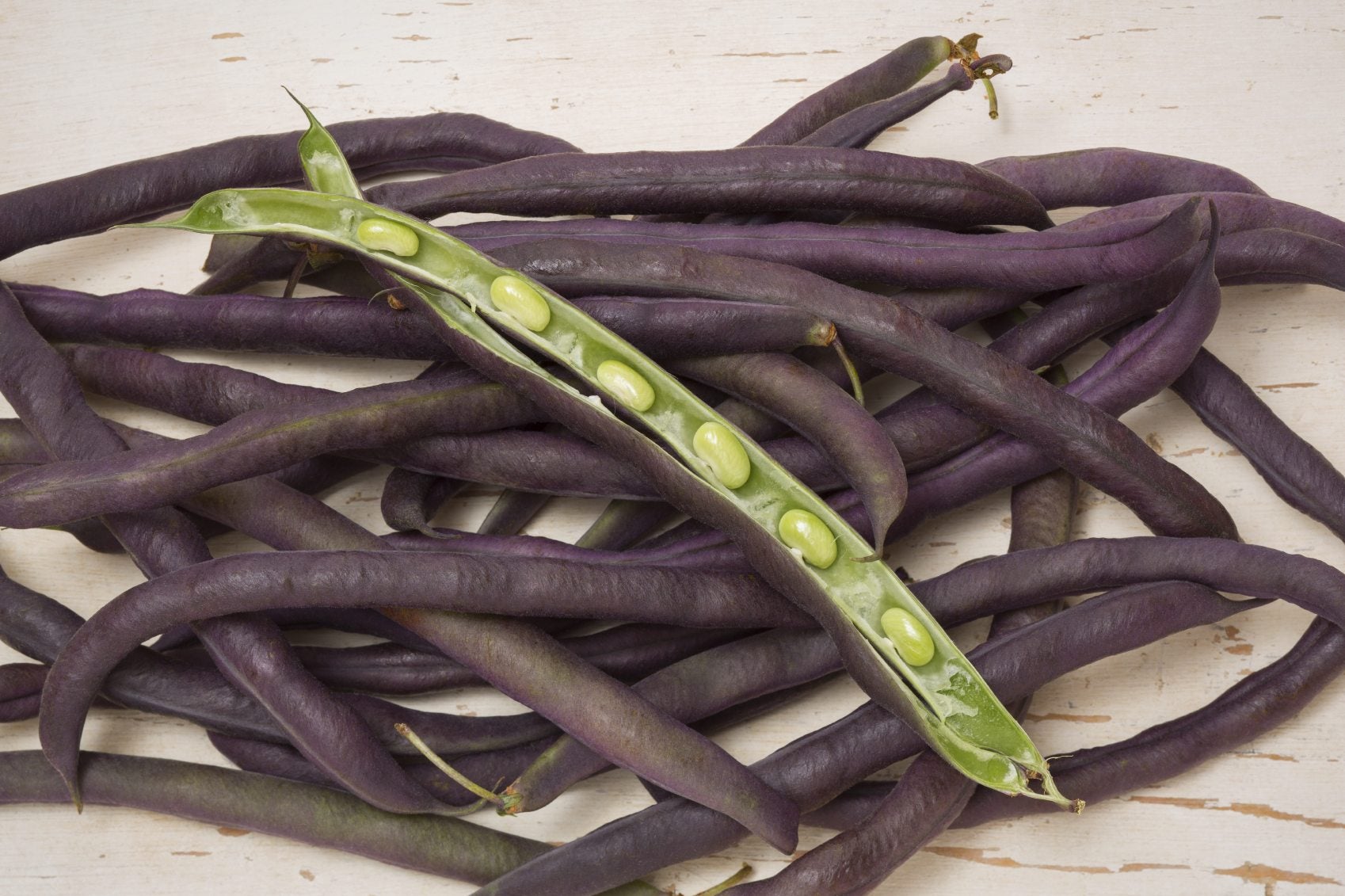Types Of Purple Hull Peas – Learn How To Grow Purple Hull Peas

If you're from the southern United States, I’m betting you have grown, or at least eaten, your fair share of purple hull peas. The rest of us might not be as familiar and are now asking, “What are purple hull peas?” The following contains information on how to grow purple hull peas and purple hull pea maintenance.
What are Purple Hull Peas?
Purple hull peas are a member of the southern pea, or cow pea, family. They are believed to be native to Africa, specifically the country of Niger, and most likely came over during the era of American slave trading.
As their name suggests, the pod of purple hull peas is of course, purple. This makes it very easy to spot for harvest among the green foliage. Contrary to its name, purple hull peas are not peas but are more akin to beans.
Types of Purple Hull Peas
Purple hull peas are related to crowder peas and black-eyed peas. There are many types of purple hull peas from vining, semi-vining, and bush varieties. All varieties are hardy in Sunset’s climate zones 1a through 24.
- Vining – Vining purple hull peas need trellises or supports. Pink Eye is an early vining purple hull variety that is resistant to all three types of Fusarium diseases.
- Semi-vining – Semi-vining purple hull peas grow vines that are closer together than the vining varieties, requiring less space. Coronet is a very early variety with a harvest at only 58 days. It has resistance only to mosaic virus. Another semi-vining variety, California Pink Eye, matures in about 60 days and has no disease resistance.
- Bush – If you are short on space, you might consider growing bush purple hull peas. The Charleston Greenpack is one such variety that forms a compact self-supporting bush with pods developing on the top of the foliage, making for easy picking. Petit-N-Green is another such variety with smaller pods. Both are resistant to mosaic virus and mature between 65 and 70 days. The Texas Pink Eye Purple Hull is yet another bush variety with some disease resistance that is harvestable in 55 days.
Most of the purple hull pea varieties produce pink-eyed beans, hence, some of the names. One variety, however, produces a larger brown bean or crowder. Called the Knuckle Purple hull, it is a compact bush variety that matures at 60 days with a resulting stronger flavor than its counterparts.
How to Grow Purple Hull Peas
The neat thing about growing purple hull peas is that they are an excellent choice for late summer planting. Once the tomatoes have finished up, use the garden space for purple hull peas for an early fall crop.
Purple hull peas are a warm weather annual that can’t abide frost, so timing is essential for later crops. For early plantings, sow seeds in the garden four weeks after the last average frost date or start peas indoors six weeks prior to transplanting out into the garden.
Gardening tips, videos, info and more delivered right to your inbox!
Sign up for the Gardening Know How newsletter today and receive a free copy of our e-book "How to Grow Delicious Tomatoes".
Succession crops can be sowed every two weeks. This southern pea variety is easy to grow, not fussy about the type of soil they grow in, and needing very little additional fertilization. Spread 2 inches (5 cm.) of organic matter (compost, rotted leaves, aged manure) over the bed and dig into the upper 8 inches (20 cm.). Rake the bed smooth.
Direct sow seeds 2 to 3 inches (5-8 cm.) apart at ½ inch (1 cm.) deep. Cover the area around the peas with a 2 inch (5 cm.) layer of mulch; leave the seeded area uncovered and water in well. Keep the seeded area moist. Once the seedlings have emerged and have three to four leaves, thin them out to 4 to 6 inches (10-15 cm.) apart and push the mulch around the base of the remaining plants. Keep the peas moist, not drenched.
There is no other purple hull pea maintenance required. The organic matter added to the soil, along with the fact that purple hulls fix their own nitrogen, negates the necessity for additional fertilization. Depending upon the variety, harvesting time will be between 55 and 70 days.
Harvest when the pods are well filled out and are purple in color. Shell the peas immediately, or if you aren’t using them right away, refrigerate them. Shelled peas can be held for several days in the fridge. They also freeze beautifully if you happen to have a bumper crop that can’t be eaten right away.

Amy Grant has been gardening for 30 years and writing for 15. A professional chef and caterer, Amy's area of expertise is culinary gardening.
-
 Looking For Plants To Give You The Soft And Fuzzies? Try These 5 Fuzzy Leaf Plant Options
Looking For Plants To Give You The Soft And Fuzzies? Try These 5 Fuzzy Leaf Plant OptionsLovers of texture, drama, silver foliage and tactile plants will adore these special sensory garden additions. These fuzzy leaf plant options will leave you all aglow
By Susan Albert
-
 Get Ready For A Summer Of Hummers! Grow These Full Sun Hummingbird Plants and Flowers
Get Ready For A Summer Of Hummers! Grow These Full Sun Hummingbird Plants and FlowersIf you’re lucky enough to enjoy a sunny backyard, make sure you are maxing out on your pollinator opportunities and grow these full sun hummingbird plants and flowers
By Tonya Barnett